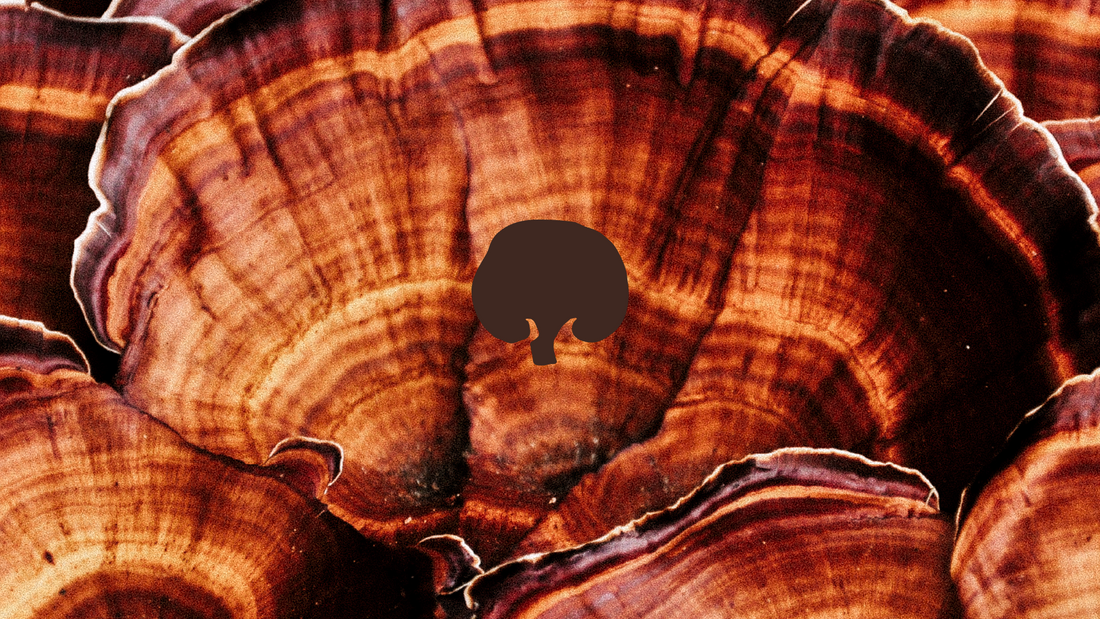
Reishi
Share
Origins and habitat
Ganoderma lucidum , known as Reishi in Japan and Lingzhi in China, is a mushroom with an ancient charm and a central role in traditional Asian medicine. Its woody consistency and characteristic shiny appearance make it easily recognizable. It grows mainly on living or decaying trunks, preferring humid environments. In nature it grows in both tropical and temperate regions, from the forests of China and Latin America, to the woods of Europe and North America.
Properties and applications
Reishi has been celebrated for millennia as one of the most precious treasures of Eastern herbal medicine. Considered a “ superior herb ” in the classification of traditional Chinese medicine, it is believed to have extraordinary health benefits thanks to its adaptogenic properties and a safety profile that allows its daily use without side effects.
- Immunity and recovery
Reishi is revered for its powerful immunomodulatory properties . Traditional Chinese medicine has used it for centuries for its ability to strengthen the entire immune system and body, thus acting as a shield against infection and aiding in recovery from ailments.
- Antioxidant and cellular health
For centuries, in oriental medicine, Reishi has been known to strengthen muscles and bones . Numerous bioactive components present in Reishi have in fact by their nature an adaptogenic and antioxidant activity , capable of protecting cells from free radicals and consequently supporting tissue regeneration.
- Stress and balance
Reishi has always been used in the history of traditional Chinese medicine to reduce physical and mental stress by promoting calm. Thanks to this effect, it is also used to facilitate sleep and improve its quality.
The main bioactive molecules
Reishi, like other medicinal mushrooms, boasts the ability to produce a large number of bioactive molecules, many of which are produced in response to environmental factors during its life cycle. Over 400 compounds have been identified, each with properties potentially useful for human health. Among the most notable:
-
Triterpenoids: Reishi contains numerous types of triterpenoids, the main one being ganoderic acid.
-
Polyphenols: Phenols are organic substances with numerous beneficial properties for the human body, in particular they have antioxidant properties.
-
Polysaccharides: Mushroom polysaccharides represent their primary active component, contributing to the bioactive action of the mycelium, fruiting body and the entire mushroom.
-
β-glucans : β- glucans are a type of polysaccharide, they are abundant in the cell walls of fungi and their bioactivity has been tested under different conditions.
Curiosity
Why “lucidum”? Ganoderma lucidum is the scientific name for Reishi. The Latin word lucidus refers to the varnished, shiny, and glistening appearance of the surface of this large mushroom.
Long Live Reishi : Thanks to its properties and multiple effects on climbing, in China, Reishi is a symbol of longevity and spiritual power. Its prolonged use is associated with a long and healthy life, so much so that it is called the “ mushroom of immortality ”.
Bibliography:
-
Cerletti C, et al. Edible Mushrooms and Beta-Glucans: Impact on Human Health. Nutrients. 2021;13(7):2195.
-
Chen, S. The Pharmacological Effects of Triterpenoids from Ganoderma lucidum and the Regulation of Its Biosynthesis. Advances in Biological Chemistry. 2020:10, 55-65.
-
Cör D, et al. Antitumour, Antimicrobial, Antioxidant and Antiacetylcholinesterase Effect of Ganoderma Lucidum Terpenoids and Polysaccharides: A Review. Molecules. 2018;23(3):649.
-
Jones Kenneth. Reishi Mushroom: Ancient Medicine in Modern Times. Alternative and Complementary Therapies. Vol. 4, No. 4 . 2009.
-
Łysakowska P, et al. Medicinal Mushrooms: Their Bioactive Components, Nutritional Value and Application in Functional Food Production-A Review. Molecules. 2023;28(14):5393.
-
Yao L, et al. A systematic review on polysaccharides from fermented Cordyceps sinensis: Advances in the preparation, structural characterization, bioactivities, structure-activity relationships. Int J Biol Macromol. 2024;282(Pt 5):137275.
-
Wachtel-Galor S, et al. Ganoderma lucidum (Lingzhi or Reishi): A Medicinal Mushroom. In: Benzie IFF, Wachtel-Galor S, editors. Herbal Medicine: Biomolecular and Clinical Aspects. 2nd edition. Boca Raton (FL): CRC Press/Taylor & Francis; 2011. Chapter 9.
-
Wang L, et al. Traditional uses, chemical components and pharmacological activities of the genus Ganoderma P. Karst.: a review. RSC Adv. 2020;10(69):42084-42097.

